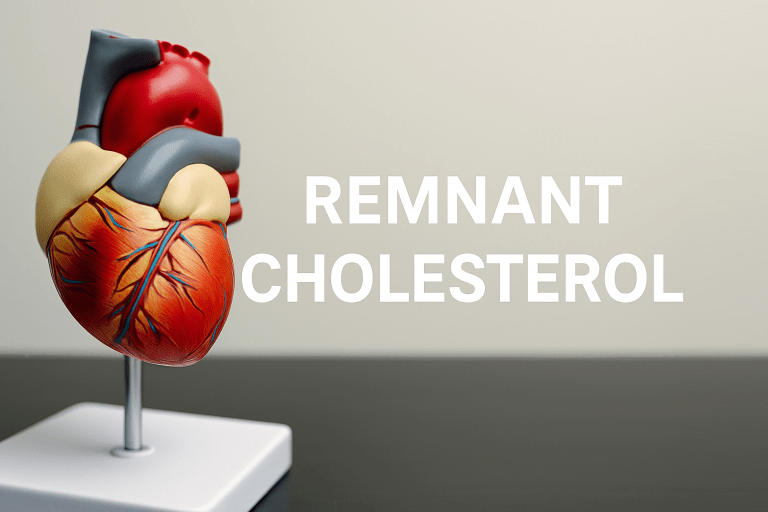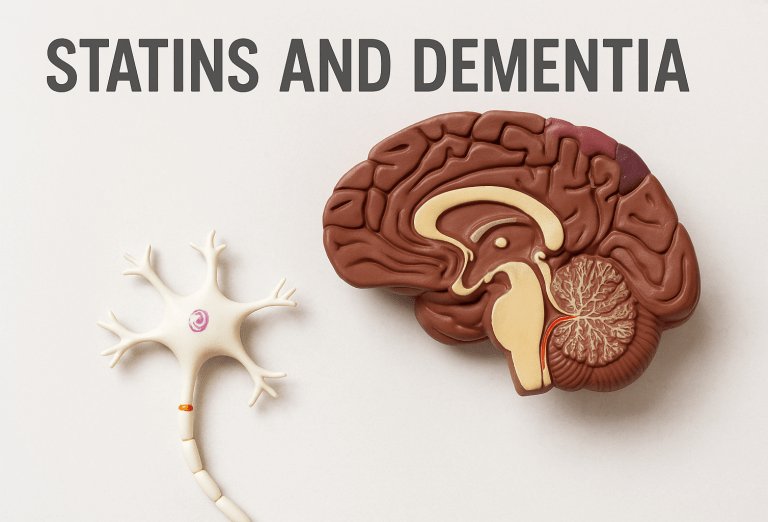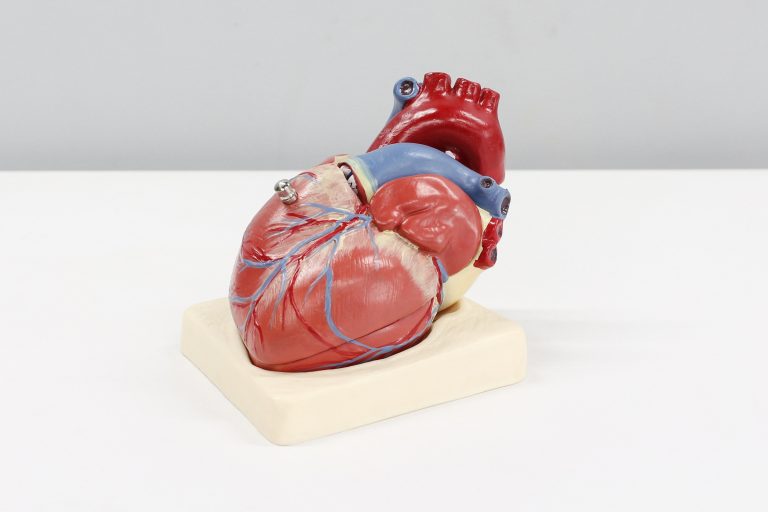Renewed Justification for Triglyceride-Lowering Therapy: Insight from REDUCE-IT
Notify Me of New Content
Provide your email address to receive notifications of new blog posts and podcast episodes.
An accumulating body of evidence has implicated hypertriglyceridemia as a treatable risk factor for the prevention of atherosclerotic cardiovascular diseases (ASCVD).(1) Most notably, the Reduction of Cardiovascular Events with Icosapent Ethyl-Intervention Trial (REDUCE-IT) provided renewed and convincing justification for triglyceride-lowering therapy in at-risk individuals with optimally controlled low-density lipoprotein (LDL-C) levels.(2) The results of this landmark study have built upon previous Mendelian randomization studies that have identified elevated triglyceride-rich lipoproteins as a causal risk factor of cardiovascular disease, systemic and arterial wall inflammation, and all-cause mortality.(3-7) It is estimated that the prevalence of hypertriglyceridemia among adult men and women in the United States is greater than 25%, highlighting the significance, relevance, and importance for triglyceride-lowering therapy.(8)
REDUCE-IT was a multicenter, randomized controlled trial that enrolled 8179 patients with established cardiovascular disease or diabetes mellitus and at least one ASCVD risk factor.(2) At the time of enrollment, all patients were receiving statin therapy, had a measured serum LDL-C below 100 mg per deciliter (2.59 mmol per liter) and a fasting triglyceride level greater than 135 mg per deciliter (1.52 mmol per liter). Patients were randomized to receive 2 grams of icosapent ethyl twice daily with food or a placebo. At one year, triglycerides were reduced by 18.3% or 39.0 mg per deciliter (−0.44 mmol per liter) in the icosapent ethyl group, and increased by 2.2% or 4.5 mg per deciliter (0.05 mmol per liter) in the placebo group. After a median follow-up of 4.9 years, the primary end point (a composite of cardiovascular death, nonfatal myocardial infarction, nonfatal stroke, coronary revascularization, or unstable angina) occurred in 17.2% of patients in the icosapent ethyl group, compared with 22.0% in the placebo group (hazard ratio, 0.75; 95% confidence interval [CI], 0.68 to 0.83; P<0.001), corresponding with an absolute risk reduction of 4.8% and a number needed to treat (NNT) of 21. Similarly, the secondary end point (a composite of cardiovascular death, nonfatal myocardial infarction, or nonfatal stroke) occurred in 11.2% of patients in the icosapent ethyl group, and 14.8% in the placebo group (hazard ratio, 0.74; 95% CI, 0.65 to 0.83; P<0.001), corresponding with an absolute risk reduction of 3.6% and a NNT of 28.
Mechanistically, it remains unknown if the benefit of icosapent ethyl observed in REDUCE-IT is due to the reduction of serum triglycerides alone or in combination with other pathways such as the stabilization of atherosclerotic plaque membranes, reduced inflammation, or perhaps an antithrombotic effect.(2) Importantly, cardiovascular benefits achieved in REDUCE-IT were similar across all baseline levels of triglycerides, and these benefits occurred irrespective of triglyceride levels attained at one year.(2) Furthermore, REDUCE-IT was not the first clinical trial to demonstrate benefit from triglyceride-lowering therapy in patients with elevated triglycerides. While many view the fibrate trials as justification to reject the triglyceride-lowering hypothesis, almost none of these trials enrolled patients on the basis of hypertriglyceridemia, the hallmark inclusion criteria of REDUCE-IT.(9) In one randomized fibrate trial that enrolled patients with hypertriglyceridemia and previous myocardial infarction, treatment with clofibrate and nicotinic acid reduced serum triglycerides by 19% and resulted in a relative risk reduction in death from ischemic heart disease by 36% and all-cause mortality by 28%.(10) Among six fibrate trials that included a post hoc subgroup analysis of subjects with hypertriglyceridemia at baseline, reductions in ischemic heart disease were observed in all trials.(11-15) Although hypertriglyceridemia subgroups were not prespecified at the time of enrollment, and the results should therefore be regarded as hypothesis-generating, the subsequent combined analysis of these trials did demonstrate a 43% reduction of coronary events for each 1 mmol per liter reduction in serum triglycerides.(16)
Potential mechanisms that explain elevated triglycerides and their role in the development of ASCVD include experimental observations that triglyceride-rich lipoproteins can penetrate into the arterial intima.(17,18) The subsequent degradation by lipoprotein lipase can then result in the liberation of free fatty acids and monoacylglycerols, both of which may be inflammatory to the arterial intima and endothelial surfaces.(9,19) This may simultaneously promote macrophage foam cell formation, the hallmark of atherosclerosis.(9,20) Using multidirectional Mendelian randomization, both elevated triglyceride-rich lipoproteins and LDL-C have been identified as causal risk factors for ischemic heart disease. Interestingly, a causal association with systemic inflammation and elevated C-reactive protein appears unique to triglyceride-rich lipoproteins and is not observed with elevated levels of LDL-C.(6)
In conjunction with triglyceride-lowering pharmacotherapy, healthcare providers should promote evidence-based dietary and lifestyle recommendations to reduce residual cardiovascular risk associated with excess triglyceride-rich lipoproteins. The reduction of saturated fat and substitution for mono- and polyunsaturated fats has long been advocated for the sake of reducing serum LDL, however, these dietary modifications do not result in appreciable reductions in serum triglycerides.(21) In randomized trials of at least a 12-month duration, Mediterranean and low-carbohydrate diets have demonstrated more favorable reductions in serum triglycerides compared to low-fat diets.(22,23) Reductions in serum triglycerides with low-carbohydrate diets have also been demonstrated to occur independent of weight loss.(24) Importantly, randomized trials have also demonstrated that dietary restriction of refined sugars alone, namely sucrose and high-fructose corn syrup, with isocaloric substitution of complex carbohydrates results in appreciable reductions in serum triglycerides, independent of caloric intake, carbohydrate intake, and weight loss.(25,26) Excessive alcohol consumption is also recognized as a modifiable dietary lifestyle risk factor associated with elevated serum triglycerides.(27,28) Therefore, in addition to promoting weight loss and regular physical exercise in patients with moderate hypertriglyceridemia, defined as fasting or nonfasting triglycerides 175 to 499 mg per deciliter (2.0-5.6 mmol per liter), healthcare providers should specifically advocate for the avoidance of added and refined sugars, highly processed foods, and excessive alcohol consumption.(29)
Despite multiple and diverse bodies of evidence that have implicated hypertriglyceridemia as a treatable risk factor for the prevention of atherosclerotic cardiovascular disease, there are clinical challenges and unanswered questions that remain. While non-prescription omega-3 supplementation has been shown to reduce serum triglycerides, it has failed to demonstrate consistent and convincing cardiovascular disease benefit.(30-32) In the Japan EPA lipid intervention study (JELIS), adult Japanese men and women with total cholesterol levels greater than 250 mg per deciliter (6.5 mmol per liter) were randomly assigned to receive either 1800 mg of EPA daily with statin or statin alone. Among the subgroup of patients with triglyceride levels greater than 150 mg per deciliter (1.7 mmol per liter), major coronary events were reduced, however, these benefits were not statistically significant.(33) More recently, Statin Residual Risk Reduction with EpaNova in High Cardiovascular Risk Patients with Hypertriglyceridemia (STRENGTH), a large randomized controlled trial evaluating Epanova, a fish oil-derived mixture composed of EPA and DHA, was terminated early due to a low likelihood of cardiovascular benefit in patients with mixed dyslipidemia.(34) Meanwhile, we enthusiastically await the results of Pemafibrate to Reduce Cardiovascular Outcomes by Reducing Triglycerides in Patients with Diabetes (PROMINENT), a randomized controlled trial evaluating Pemafibrate and cardiovascular disease in diabetic patients with dyslipidemia but optimally controlled serum LDL-C.(35) It is our hope that ongoing research and clinical trials will refine our understanding of triglyceride-rich lipoproteins in the context of ASCVD, and more importantly, provide conclusive evidence regarding meaningful therapeutic interventions.







